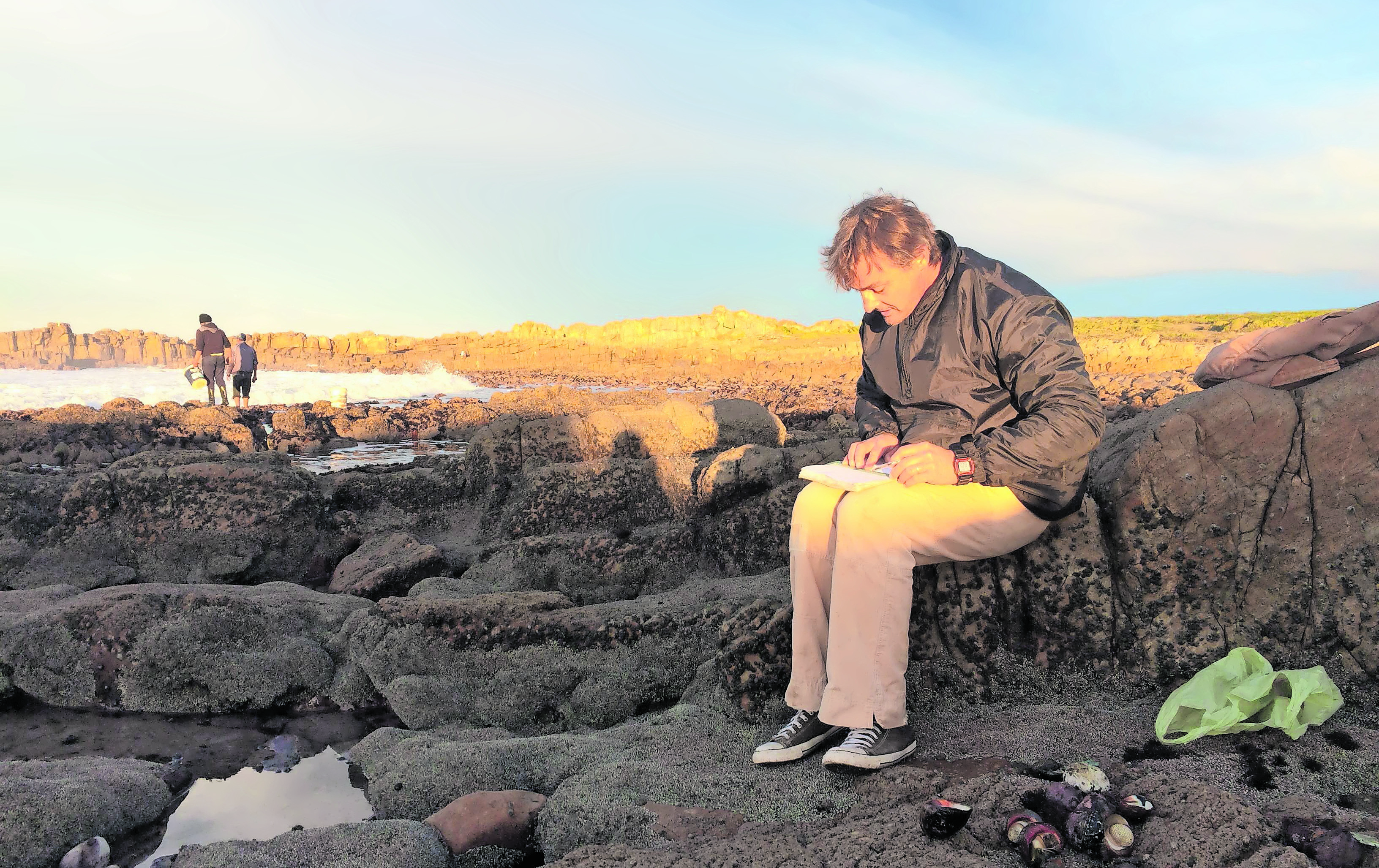Painting by Maggie Newman reflecting the lives of humans on the southern Cape Coast dating back 164 000 years. (Photo: Maggie Newman)
The cognitive revolution of humans took place when we evolved not only anatomically but also cognitively. For signs of human development into sentient, conscious beings, we look to the first indications of planning, invention, art and adornment, which, in turn, reflect an awareness of self, others and the world.
Scientists from Nelson Mandela University’s African Centre for Coastal Palaeoscience (ACCP) are collaborating on research into this phase of human evolution. The team includes Professor Richard Cowling, Dr Alastair Potts and Professor Curtis Marean from the School of Human Evolution and Social Change at Arizona State University.
At Pinnacle Point Cave in Mossel Bay on the southern Cape coast, they have found sandblasted shells collected by humans 164 000 years ago. During his SANOCEAN presentation Dr Potts explained that they know the shells weren’t collected fresh for food because they were sandblasted, so had already been lying on the beach. These shells would have been used for adornment, such as necklaces.
 ACCP member Dr Jan De Vynck who recently graduated with his PhD in Ocean Science from Nelson Mandela University, taking notes during an ethnographic study of marine intertidal foraging. (Photo: ACCP)
ACCP member Dr Jan De Vynck who recently graduated with his PhD in Ocean Science from Nelson Mandela University, taking notes during an ethnographic study of marine intertidal foraging. (Photo: ACCP)
“There were also signs of art during this period, including abalone shells with five different types of ochre in them — an artist’s palette. And although we do not know whether this was used for adornment or paintings, it is a clear sign of the progression in cognitive development,” said Potts.
During the same period, the team found vast deposits of discarded shells in the middens in the cave — evidence that humans had been harvesting shellfish in the intertidal zone. Shellfish and other aquatic resources are extremely rich in the specific nutrients that the brain requires to grow, such as iodine and omega3 polyunsaturated fatty acids.
“These humans also had a rich source of terrestrial plant foods, including bulbs and berries, and the region at the time was full of animals: giant zebras, wildebeest, buffalo, even giraffe,” said Potts who, with his colleagues, has reconstructed what this extinct ecosystem might have looked like.
For more information:
https://www.humanorigin.co.za/